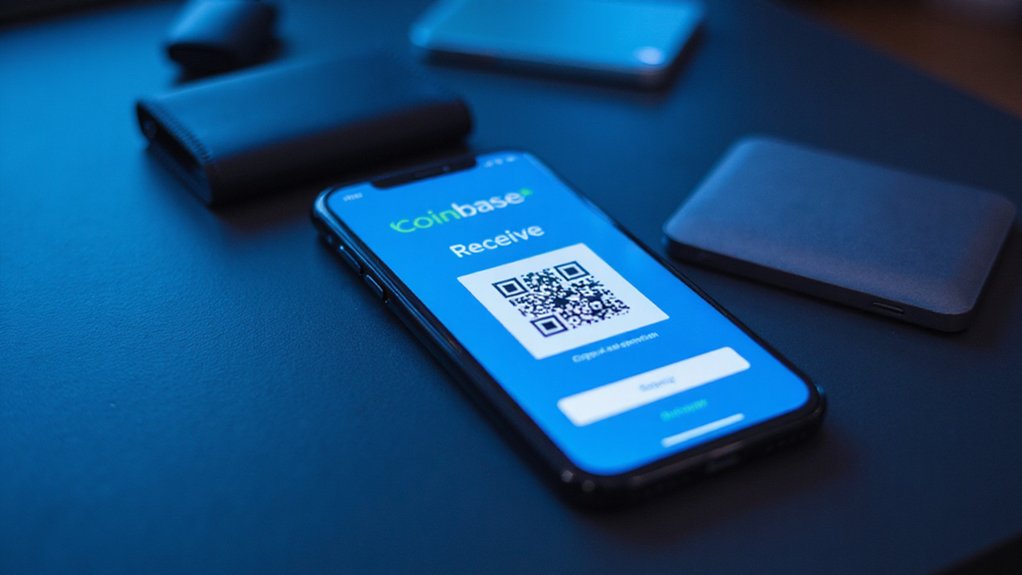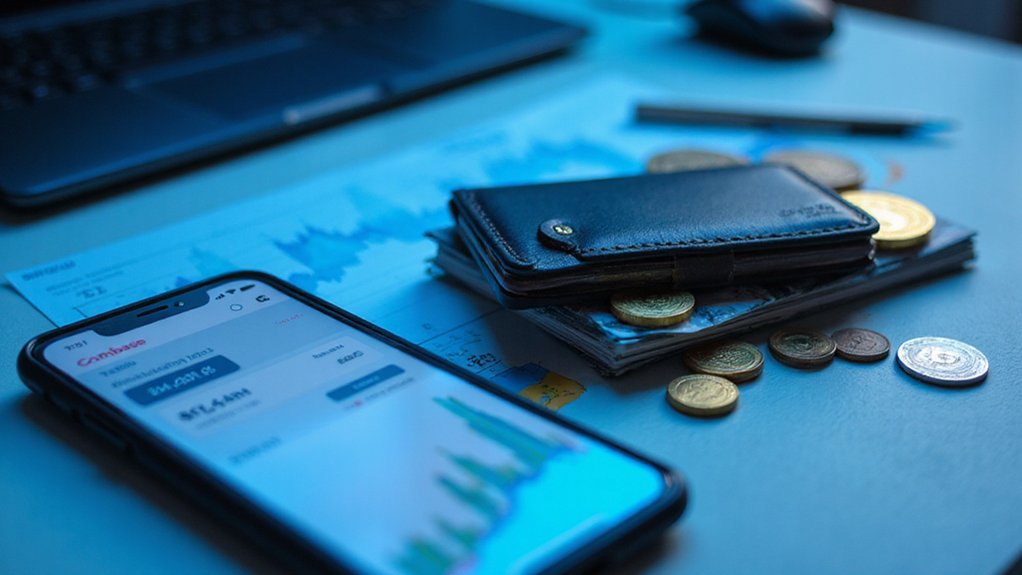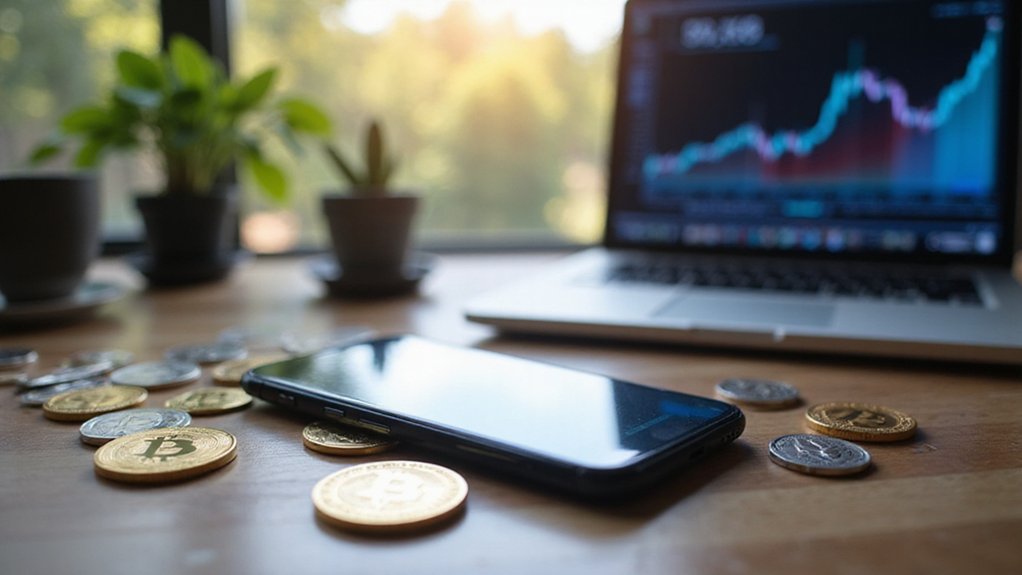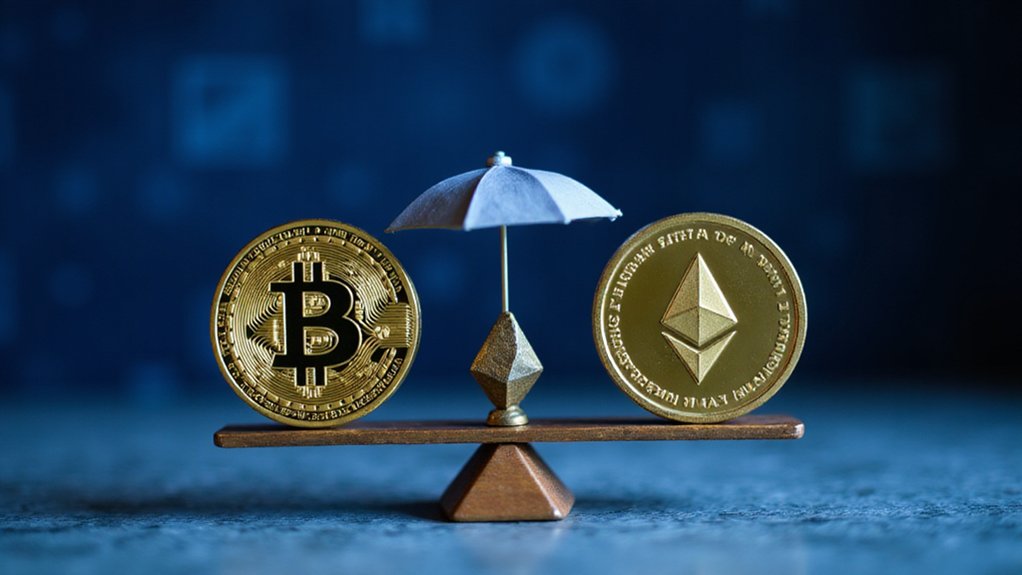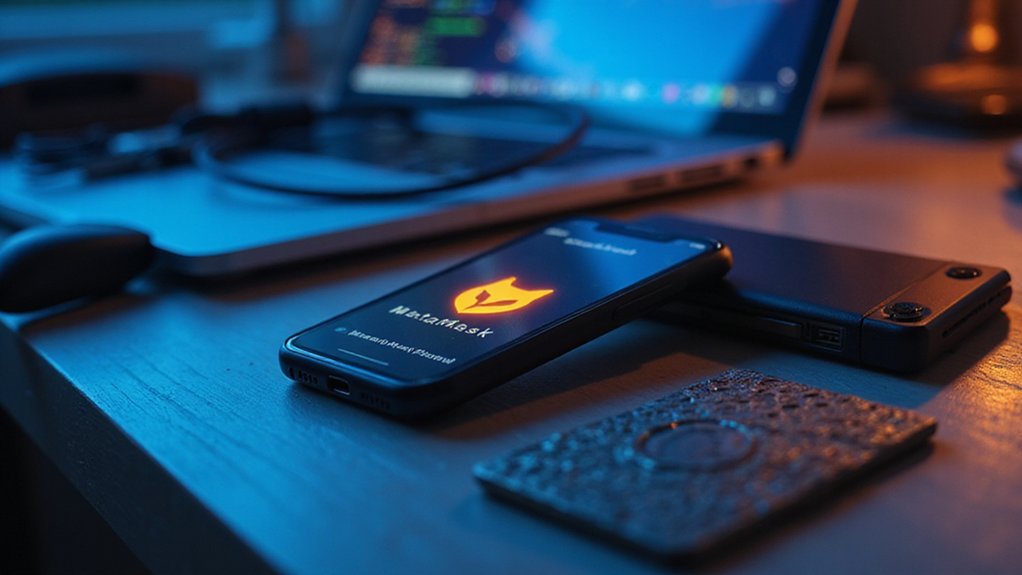To find a Coinbase wallet address, users navigate to their account via website or mobile app, then select “Send and Receive” followed by “Receive.” After choosing the desired cryptocurrency, Coinbase displays both a QR code and alphanumeric address for receiving funds. Alternatively, accessing the “Crypto addresses” section within one’s profile reveals the complete repository of asset-specific receiving endpoints. Vigilance regarding network selection (particularly for Ethereum’s ERC-20) prevents the catastrophic consequences of mismatched transfers—a financial abyss from which few assets return.

How often do cryptocurrency enthusiasts find themselves fumbling through digital interfaces, searching for that elusive string of characters necessary for receiving assets?
The process of locating one’s Coinbase wallet address—that cryptographic fingerprint essential for receiving digital assets—need not be an exercise in frustration.
Users can access their wallet addresses through multiple pathways on the Coinbase platform.
Navigating Coinbase’s architectural ecosystem reveals multiple avenues to uncover your digital vault’s unique receiving coordinates.
The most direct route involves logging into one’s account (credentials at the ready), proceeding to the profile icon, and locating the “Crypto addresses” section—a veritable repository of individualized receiving endpoints for each supported cryptocurrency.
Alternatively, the “Send and Receive” button on the website offers a streamlined approach.
After selecting “Receive,” users must choose their cryptocurrency of interest from the available options.
The system then displays both a scannable QR code and the alphanumeric address—dual modalities that accommodate various transfer scenarios.
It’s worth noting that certain assets, particularly Ethereum, present network options (e.g., ERC-20), a critical selection that, if mismanaged, can result in the evaporation of one’s digital holdings.
Mobile users navigate a parallel yet distinct process.
Within the Coinbase app, after selecting the desired cryptocurrency, the “Receive” button reveals the corresponding address.
The copy icon facilitates clipboard transfer—an essential feature given the catastrophic consequences of manual transcription errors.
The cardinal rule of cryptocurrency transfers remains inviolable: addresses are cryptocurrency-specific.
Sending Bitcoin to an Ethereum address (or vice versa) constitutes a one-way transaction into the void.
This peculiar reality—that millions in value can vanish through a simple address error—represents one of the ecosystem’s more sobering characteristics.
For the conscientious participant in this financial frontier, verification becomes ritual.
Best practices include generating test transactions before substantial transfers and maintaining heightened vigilance when switching between networks.
While Coinbase offers address regeneration functionality (via the refresh icon), the platform’s user-friendly interface ultimately cannot protect against fundamental addressing errors that plague even seasoned participants.
Users seeking to optimize their cryptocurrency transactions on Coinbase should also familiarize themselves with the platform’s maker-taker fee model which can significantly impact overall costs when transferring assets.
Frequently Asked Questions
Is My Coinbase Wallet Address the Same for All Cryptocurrencies?
No, a Coinbase wallet address is not the same for all cryptocurrencies.
Each cryptocurrency requires its own unique address format—Bitcoin addresses typically begin with “1,” “3,” or “bc1,” while Ethereum addresses have their own distinct structure.
This blockchain-specific architecture (a necessity, not merely a convenience) guarantees proper routing and transaction validation.
Users must thus utilize the correct address type for each cryptocurrency, lest their digital assets vanish into the ether, quite literally in some cases.
Can I Change My Coinbase Wallet Address for Security Reasons?
Yes, Coinbase users can indeed modify their wallet addresses for enhanced security.
Coinbase actually facilitates this prudent practice by automatically generating new addresses periodically—a subtle yet effective security feature that frustrates potential attackers. Additionally, users may manually create multiple addresses for asset segregation, introducing an extra layer of privacy protection.
While this practice necessitates diligent record-keeping (misplaced addresses being the digital equivalent of burning currency), the security benefits generally outweigh the administrative burden for security-conscious individuals.
How Long Does It Take for Funds to Appear After Transfer?
Transfer completion times vary by method—a fact that can occasionally frustrate even the most patient investors.
ACH bank transfers typically require 3-5 business days, while debit card purchases and transfers from USD balances manifest instantly.
Cryptocurrency transactions generally complete within 30 minutes, though network congestion may extend this timeframe.
Interac e-Transfers typically process within minutes but can occasionally stretch to 24 hours, while PIX deposits may require up to 30 minutes of digital purgatory.
What Happens if I Send Crypto to the Wrong Address?
Sending cryptocurrency to an incorrect address is basically a financial point of no return—a one-way ticket for your digital assets.
Unlike traditional banking’s safety nets, blockchain’s immutability means transactions, once confirmed, are irreversible.
The consequences? Permanent loss of funds, with recovery virtually impossible unless the recipient is identifiable and cooperative (an unlikely scenario in crypto’s pseudonymous landscape).
This underscores the cardinal rule of digital asset transfers: verify addresses with obsessive precision before hitting “send.”
Are There Fees for Receiving Cryptocurrency in My Coinbase Wallet?
No, there are no fees for receiving cryptocurrency in a Coinbase Wallet.
While the cryptocurrency ecosystem seems determined to extract fees at every conceivable juncture, receiving funds represents a rare exemption to this financial gauntlet.
The sender, however, bears the brunt of network fees—those unavoidable blockchain toll booths that fluctuate with network congestion.
Coinbase Wallet itself magnanimously refrains from adding service charges atop these network-imposed costs for incoming transactions.
